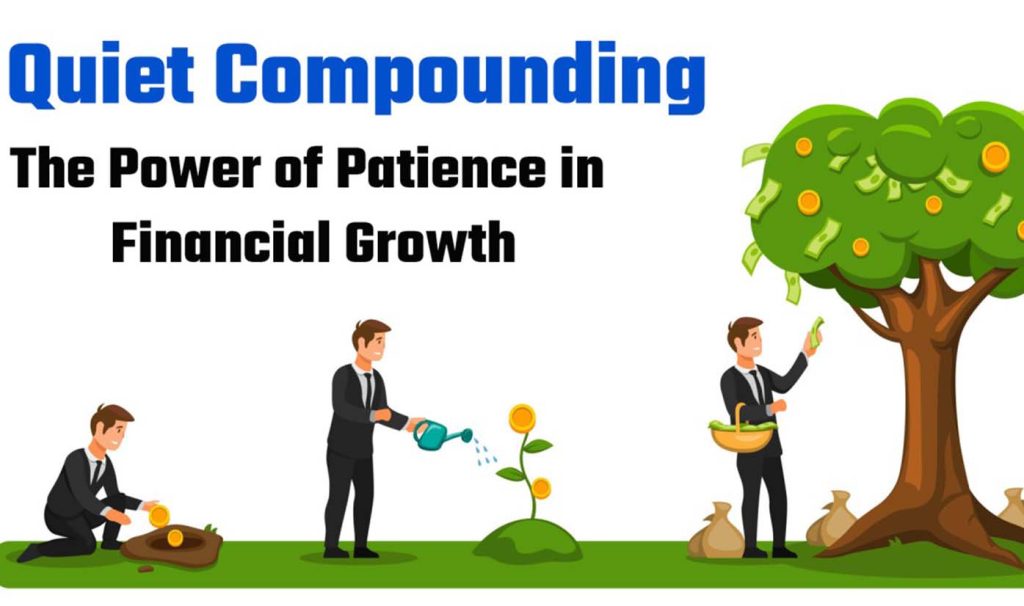“Compound interest is the eighth wonder of the world. He who understands it, earns it… he who doesn’t, pays it.” – Allegedly Einstein, definitely true.
Small Numbers, Big Magic
At first glance, compound interest seems like a dry financial concept you’d skim past in a textbook. But here’s the truth: it’s one of the most powerful, beautiful, and misunderstood forces in investing—and when paired with value investing, it becomes your greatest long-term wealth engine. This isn’t just a math trick—it’s a strategy for building real, sustainable financial independence, especially if you’re patient and consistent. In this article, we’ll explore how compound interest works, why it loves value investing, who benefits from it, and how to apply it to real-world investment products. Stick around; this could be the most profitable ten minutes you read today.
What is Compound Interest, Really?
Compound interest is more than just earning interest on your money—it’s earning interest on your interest. It’s a loop of growth where time becomes your best friend. The longer your money stays invested, the more dramatic the results. In the first few years, it can feel sluggish, even frustrating. But after a decade or two, the snowball effect kicks in. Returns grow faster, reinvested dividends multiply your base, and suddenly, you’re not just investing money—you’re growing a machine that builds itself.
Think of it like planting a tree. In year one, it’s just a sapling. In five years, it’s taller. But by year twenty, it’s providing shade, fruit, and stability. That’s compound interest in action.
Why Compound Interest Loves Value Investing
Value investing is all about buying strong companies at a discount and holding them long-term. It’s patient, intentional, and based on fundamentals. Sounds familiar? That’s because it aligns perfectly with the philosophy of compounding. When you invest in undervalued companies and give them time to grow, the returns you generate are magnified through compounding—especially when those companies pay dividends that you reinvest.
Value stocks often belong to well-established, stable companies—think Johnson & Johnson, Coca-Cola, or Procter & Gamble. These companies have strong balance sheets, reliable cash flows, and a history of weathering economic storms. They’re less volatile, more predictable, and they reward you steadily—ideal conditions for compounding to work its magic.
Who Should Embrace This Strategy?
If you’re someone who prefers quick wins and stock market drama, compounding might not excite you at first—but it will change your life over time. This strategy is best suited for several types of people.
Young professionals benefit enormously. If you’re in your 20s or 30s, starting early—even with small amounts—can give you a powerful head start. The time horizon allows your money to double multiple times before retirement.
Busy professionals or entrepreneurs who don’t want to monitor the stock market daily also find value in this hands-off, long-term approach. You invest in strong companies and let time do the heavy lifting.
If you’re planning for children’s education, early retirement, or even financial independence, compounding through value investments helps you build a reliable base for those long-term goals. Even for those who start later in life, consistent investment in dividend-paying or undervalued stocks can provide meaningful results, especially when paired with disciplined contributions.

Choosing the Right Investments for Compound Growth
To maximize compound interest, your investment products should support long-term stability, low fees, and steady growth. Individual value stocks are an excellent place to start. These are often companies with decades of profitability, strong leadership, and a history of weathering market downturns. Reinvesting their dividends helps you accumulate more shares over time, enhancing your compounding power.
Dividend reinvestment is one of the simplest and most effective compounding tools. Companies that grow their dividends annually offer increasing returns with zero extra effort. Instead of spending those dividends, you buy more stock—creating a snowball effect that grows your holdings each year.
If you’re looking for a more diversified approach, consider mutual funds or exchange-traded funds (ETFs) that focus on value or dividend-paying companies. These funds typically carry lower fees, which means more money stays in your account compounding year after year. Avoid high-fee actively managed products that eat into your returns and disrupt compounding’s magic.
Real estate investment trusts (REITs) can also offer consistent dividends that support compounding if you reinvest those distributions. They’re particularly useful if you prefer assets that generate monthly income and align with long-term income growth.
Simple Rules for Maximizing Compound Growth
The most important step? Start early. Even small amounts invested in your 20s or 30s can blossom into hundreds of thousands—or millions—by retirement, thanks purely to the time horizon. Don’t wait to save up a huge sum. Just begin.
Second, reinvest all income. Whether it’s dividends, interest, or capital gains, reinvesting fuels compound growth. If you let the income sit in cash or spend it, you miss out on its growth potential.
Third, stay consistent. Set up automatic monthly contributions to your investment accounts. This removes emotion from investing and keeps your compounding machine running through good markets and bad.
Lastly, keep fees low. High management fees can significantly reduce your long-term gains. Use discount brokerages, index funds, and DIY portfolio tools to retain more of your returns.
Why Consistency Beats Brilliance
One of the biggest traps investors fall into is chasing quick returns or panicking when the market drops. Compound interest doesn’t like drama—it prefers calm, steady growth. Value investing works because it avoids hype and sticks to fundamentals. When you combine that with the discipline of regular investing and reinvesting earnings, your wealth starts to build quietly—and then explosively.
The key is not to interrupt compounding. Every time you sell early, try to time the market, or shift your strategy impulsively, you reset your growth trajectory. Time is your most valuable resource in compounding. Protect it fiercely.
A Real-Life Example: Buffett’s Quiet Power
Warren Buffett became a billionaire not because he found secret stocks, but because he started investing early and let compound interest do the work for decades. He made 99% of his net worth after his 50th birthday. Why? Because his wealth had time to build upon itself.
Imagine investing $10,000 in a solid value stock that grows at 10% annually. After 10 years, you’ll have $25,000. After 20 years? $67,000. After 30 years? $174,000. It’s not magic—it’s math + patience.
Tools, Books, and Resources for Getting Started
To get started on your compound investing journey, consider using platforms like M1 Finance or Fidelity for automated investing and dividend reinvestment. Use financial tracking apps like Personal Capital to monitor your portfolio and keep your fees in check.
Some must-read books include The Intelligent Investor by Benjamin Graham, The Compound Effect by Darren Hardy (not just about money, but habits too), and One Up on Wall Street by Peter Lynch.
For ongoing education, financial blogs like The Motley Fool or Seeking Alpha offer deep dives into value stocks and compounding strategies.

Compounding is Quiet, but Powerful
In a world obsessed with fast results, compound interest whispers a different truth: patience is the ultimate power move. Value investing gives compound interest the perfect foundation to thrive—steady growth, reliable income, and a long-term view.
So if you’re serious about wealth building, stop looking for the next hot stock. Instead, look for good businesses at great prices. Reinvest everything. Stay the course. And most importantly, give it time.
You won’t notice it tomorrow. But ten years from now? You’ll be glad you planted the seeds today.
